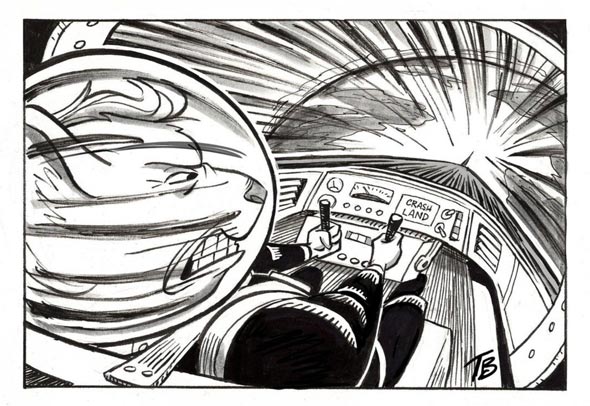
The power of storytelling in art lies not just in the narrative itself but in how it is visually conveyed. By experimenting with different points of view, you can add layers of meaning and emotion to your drawings. Whether you’re illustrating a scene from a story or creating a standalone piece, understanding perspective can significantly enhance your storytelling.
This newsletter was inspired by our course taught by Tony Bancroft: Telling A Story Through Illustration where he takes you through all the steps to creating wonderful stories with your drawings. Another great inspiration was Tony’s chapter in our The Character Design Book.
Now, let’s begin with some basic tips to help you effectively use perspective in your drawings!
Different points of view can dramatically alter the way a story is perceived. Consider using high, low, or eye-level perspectives to evoke different emotions.
A high angle can create a sense of vulnerability or insignificance, while a low angle can empower subjects, making them appear larger and more dominant. An eye-level perspective often feels more relatable and intimate.
Experimenting with these angles allows you to guide the viewer’s emotional response and draw them into the narrative.
Layering elements in your drawing can provide depth and context. The foreground, midground, and background each play a crucial role in storytelling.
Use the foreground to highlight key characters or objects that are central to your narrative. The midground can provide context and setting, while the background can offer additional story elements or atmosphere. By carefully composing these layers, you can lead the viewer’s eye and enhance the overall story being told.
Dynamic compositions can significantly enhance storytelling by creating movement and tension. Use diagonal lines, asymmetry, and varied shapes to guide the viewer’s gaze and create a sense of action.
For instance, a diagonal line leading from a character to a distant horizon can suggest a journey or an impending challenge. Varying the size and arrangement of elements can also create a more engaging visual flow, drawing the viewer deeper into the scene.
The way characters are positioned and their expressions can convey powerful emotions and narratives. Pay attention to body language and facial expressions; these subtle details can tell a story in themselves.
For instance, a character looking away from the viewer may evoke feelings of sadness or contemplation, while an open posture can suggest confidence and openness. Use your understanding of perspective to place characters in ways that amplify their emotions and connections to the scene.
Framing can significantly affect how a story is perceived. You can use natural elements, such as trees or doorways, to frame your subjects and create a focal point. This technique can guide the viewer’s attention and emphasize key aspects of the narrative. Additionally, experimenting with unconventional framing—like extreme close-ups or distant shots—can create a unique storytelling effect that invites curiosity and engagement.
Incorporating different points of view in your drawings can significantly enhance the storytelling aspect of your art. By exploring perspective, composition, character expressions, and lighting, you can create richer, more engaging narratives. Remember, the key is to experiment and find what resonates with your story. Each drawing is an opportunity to communicate not just visually but emotionally, inviting your audience into the world you create.
Make sure to check out our course Telling A Story Through Illustration where Tony Bancroft takes your storytelling skills to the next level through his detailed instructions. Another great resource is Tony’s chapter in our The Character Design Book!
Happy drawing!
Emilie Apel is a French/American multidisciplinary artist based in the U.S. She travels frequently to Nepal and loves exploring the fusion between her meditation practice and art. Emile's favorite medium is watercolors.